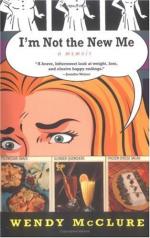It is of the first importance to keep the two halves of the kite on the right and the left of the upright stick perfectly symmetrical. And this is by no means an easy matter. It often happens in bending the cross-stick that, owing to differences in the fibre and elasticity of the wood, one side bends more than the other, with the result that the two halves present different curves and consequently unequal wind areas. To offset this difficulty, and also to strengthen the skeleton, Mr. Eddy’s practice is to add a bracing piece at the back of the cross-stick—a piece about one-fourth of the length of the cross-stick itself, and of the same width and thickness. If the two halves of the kite are already quite symmetrical, he places this bracing stick with its centre directly even with the point of juncture of the two large sticks, its two ends being fastened with twine to the cross-stick, about nine inches on either side of the crossing-point. But if one half of the cross-stick shows a greater bend than the other, he places the longer arm of the bracing piece toward the side that bends the most, thus presenting a greater leverage against the wind on that side than on the other, and so equalizing things.
With the two sticks and the brace all thus properly in place, a supporting frame for the paper or cloth is formed by running, not cord, but fine picture wire, over the tips of the sticks, notched to hold it in place, in the ordinary way. Then, with a thin, clear paste made of starch, the paper may be laid on, care being taken to paste the edges so as to leave a certain amount of slack or looseness in the part of the kite below the cross-stick, so that each of the lower faces will present concave wind surfaces. To preserve the required equilibrium, it is important that the amount of looseness in the paper be equal on the two sides; and in order to keep it so, it is necessary to measure exactly the amount allowed.
[Illustration: THE EDDY TAILLESS KITE.
Front view, showing how the line is attached.
A storm-flyer.—The diamond-shaped figure in the centre is an opening made to lessen the wind pressure.]
Those who wish to make many kites will do well to buy thin manilla paper, as wide as possible, having the dealer roll off for them seven hundred or eight hundred feet, say a yard in width, which will insure a cheap as well as an abundant supply. For strong winds and large kites it is best to use cloth as the covering. It should be sewed to the frame, and, if carefully put on, will do service for years. Silk, of course, is the ideal material; but its costliness puts it beyond ordinary means, and common silesia, such as is used in dress linings, is almost as good. Whatever the material, the kite should be fortified at the corners by pasting or sewing on quadrants of paper or cloth, so as to give double thickness at the points most liable to injury. A finished six-footer should not weigh over twenty ounces, if covered with paper; or twenty-five ounces, if covered with cloth. Mr. Eddy has made a six-footer for calm flying as light as eight ounces.




